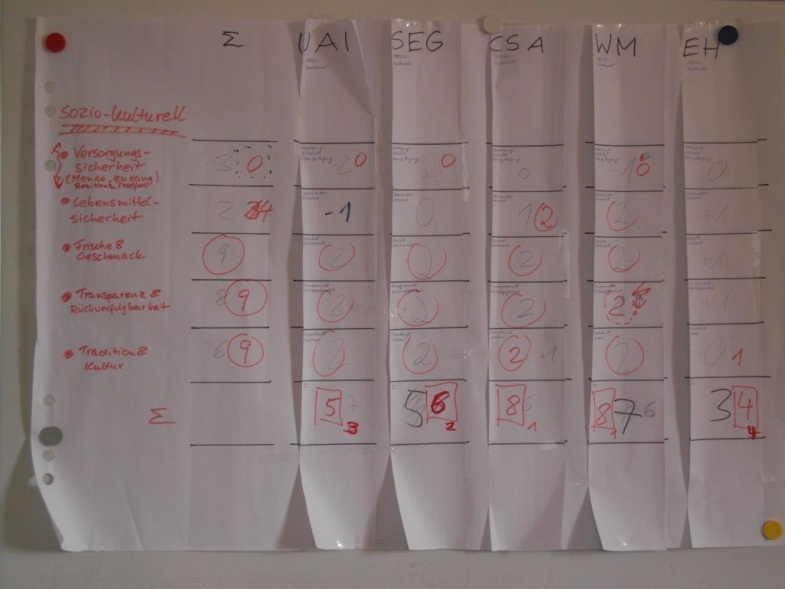Sustainability Impact Assessment Workshop Berlin
Background: SIA Preparation and Implementation
The pilot workshop for testing the methodology of the SIA with regional stakeholders took place on the 05/03/2014 in Berlin. Nine actors representing five chain types, namely urban agriculture (community gardens and self-harvesting garden), community supported agriculture, farmers market and sale to retail joined the meeting. The detailed methodology and experiences obtained are described in the SIA guidelines (see Annex III). In contrast to with the planned workshops in the other case study regions, we used for the pilot a different baseline scenario, because in the Berlin case study we focus on organic short food chains. The baseline scenario was an organic long global food chain with distribution via supermarkets for vegetables. We also adjusted the scale for the impact assessment to a five-point scale (+2 =very positive to -2= very negative, 0=no impact).
Results
Regarding their environmental impacts, CSA and self-harvesting garden were rated highest (sum six and five points). Most of the chain examples are estimated to perform better than the baseline, except Urban Gardening (self-supply) in the fields of protection of natural resources and efficient resource use, because of the estimation that urban consumers producing their own food tend to have less experience and practise in gardening than professional farmers and gardeners. Besides retail, all chain types are expected to reduce packaging and increase biodiversity.

According to the workshop results, social sustainability represents the main strength of the studied chain examples. In comparison with the baseline scenario all chain types besides retail show high values in the sum of all impact fields (i.e. seven points for Urban Gardening, six points in the case of the self-harvesting garden, CSA and weekly market). Retail is estimated weaker in terms of social sustainability, while performing better in the field of economic sustainability. The aspect of food security was estimated very critically. Despite long chains with a complex logistical organisation underlying certain other risks, stakeholders assumed that a long chain with global purchasing of food shows better performance, as regional short chain based on local food cannot respond properly to full dietary requirements. Another critical point is food safety in Urban Gardening, where only little is known about heavy metal concentrations in urban soils and unprofessional gardening practises which might endanger the safety of the grown food. In summary, Urban Gardening and retail show certain weaknesses in two of the three sustainability dimensions, whereas the other chain examples address all three sustainability dimensions quite well.

Preliminary results from the workshop and the online survey (pre-test) led us to the assumption, that certain chain types like CSA and direct sales of farmers address sustainability objectives better than other chain types.
